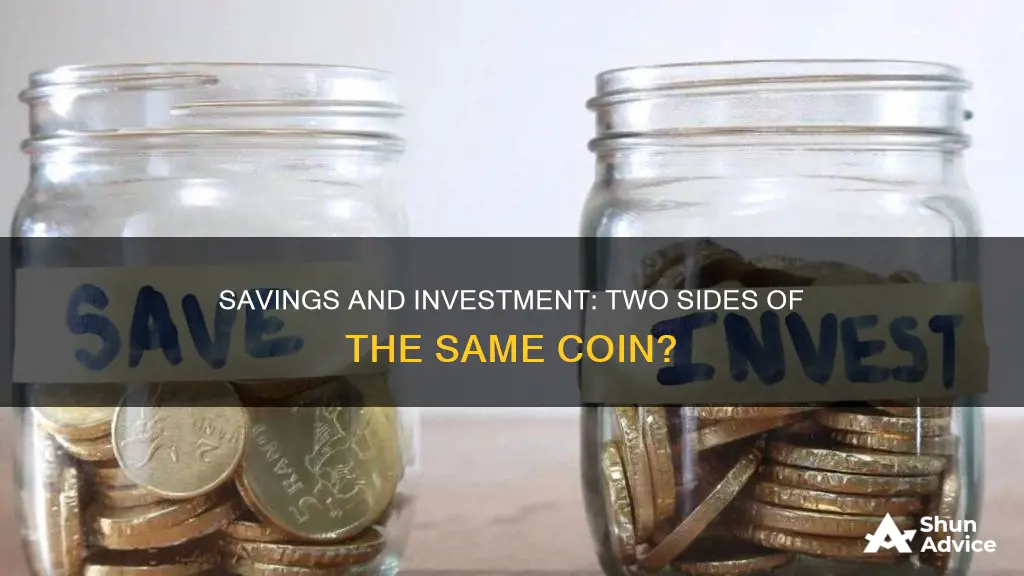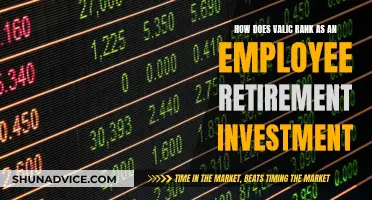
The concept of savings equalling investment is a topic of debate in economics. In a closed economy, the remainder of aggregate output after subtracting consumption by individuals and the government must equal investment. However, this does not imply that an increase in savings will lead to a direct increase in investment. The saving-investment identity holds true because investment includes inventory accumulation, both deliberate and unintended. If consumers decide to save more and spend less, the fall in demand would lead to an increase in business inventories, bringing saving and investment into balance.
In a neo-classical economic model, the level of saving is assumed to equal the level of investment. This is because investment is determined by the available savings in the economy. If there is an increase in savings, banks can lend more money to firms to finance investment projects. However, this relationship between savings and investment is not always clear-cut, and there are cases where savings do not seem to equal investment.
| Characteristics | Values |
|---|---|
| Savings equal investment | True by definition |
| Savings equal investment in a closed economy | Y = C + I + G, therefore I = Y - C - G |
| Savings equal investment in an open economy | Y = C + I + G + (X - M), therefore I = S + (M - X) |
| Savings equal investment in an economy with government | Y = C + S + T, therefore S = Y - T - C |
| Savings equal investment in an economy with foreign trade and capital flows | Private saving + government saving + foreign investment domestically = private physical investment |
| Savings equal investment in neo-classical economics | Assumed true because investment is determined by available savings |
What You'll Learn

Savings and investment are linked by an accounting identity
In an open economy, the national income identity is:
Y = C + I + G + (X - M)
Where Y is the Gross Domestic Product (GDP) or total income/expenditure of the economy, C is consumer spending, I is investment, G is government spending, and (X - M) is the balance of trade (exports minus imports).
Private saving is:
S = Y - T - C
Where S is saving, Y is total income, T is the amount of taxes levied, and C is consumption.
Combining these equations, we get:
I = S + (M - X)
Thus, in an open economy, investment (I) is equal to private saving (S) plus the capital inflow from abroad (M - X).
In a closed economy, the equation is simplified as there are no imports or exports:
I = S
This means that in a closed economy, savings and investment are always equal.
However, it is important to note that this identity does not imply that an increase in saving will directly lead to an increase in investment. Businesses may respond to increased inventories by decreasing output and intended investment, which would lead to a reduction in income and, consequently, savings.
The savings-investment identity is a fundamental concept in economics, and it highlights the relationship between money saved and money invested in an economy.
Roth IRA: Best Investments Now
You may want to see also

Savings can be private or public
Public savings, also known as government savings, are the difference between government revenue and expenditures over a specific period. They are determined by the fiscal policies and budget decisions made by the government. A budget surplus indicates that the government is saving, while a deficit means it is borrowing or using reserves. A budget surplus can contribute to national savings and reduce the need for government borrowing, while a deficit may lead to increased government debt.
National savings represent the total amount of money saved within a country and are the sum of private and public savings. They play a vital role in driving long-term economic prosperity. High levels of national savings benefit a country's economic growth by providing a domestic pool of funds for investment in businesses, infrastructure, and other productive activities. This can lead to increased productivity and economic output, the creation of new jobs, and lower borrowing costs for businesses and individuals.
Silver's Investment History: 1800s
You may want to see also

Investment can be intended or unintended
Intended Inventory Investment
A positive flow of intended inventory investment occurs when a firm expects sales to be high enough that the current level of inventories may be insufficient. This could be due to short-term fluctuations in the timing of customer purchases, which could lead to a temporary inability to supply the product when a customer demands it. To avoid this, the firm deliberately builds up its inventories by producing more than it expects to sell. This is viewed as a form of spending, with the firm buying inventories from itself.
Conversely, if a firm decides that its current level of inventories is unjustifiably high, it will engage in a negative flow of intended inventory investment by deliberately producing less than it expects to sell.
Unintended Inventory Investment
Positive or negative unintended inventory investment occurs when customers buy a different amount than the firm expected during a particular time period. If customers buy less than expected, inventories unexpectedly build up and unintended inventory investment is positive. Conversely, if customers buy more than expected, inventories decline and unintended inventory investment is negative.
Unintended inventory investment can occur alongside intended inventory investment, as they are separate, unrelated events. The former is based on deliberate actions to adjust inventory levels, while the latter results from mispredictions of customer demand.
Equilibrium
In macroeconomics, equilibrium in the goods market occurs when the supply of goods (output) equals the demand for goods (the sum of various types of expenditure). If these are equal, there is no unintended inventory investment and the goods market is in equilibrium. If they are not equal, there is disequilibrium in the goods market, reflected by the presence of positive or negative unintended inventory investment.
Business Cycle
A typical business cycle can be described as follows:
- Some group (consumers, government, purchasers of exports, etc.) decides to increase their spending.
- Producers experience negative inventory investment as sales have unexpectedly exceeded production, leading to too-low inventories.
- Firms engage in positive intended inventory investment to build up inventories to an appropriate level.
- There is a sustained decrease in some type of spending.
- There is positive unintended inventory investment as firms fail to simultaneously lower their production. Now, inventories are too high.
- Firms deliberately cut back their production to lower inventories, engaging in negative intended inventory investment until the target level is reached.
- There is a sustained increase in some type of spending.
- There is negative unintended inventory investment as firms fail to simultaneously raise their production. Now, inventories are too low.
- Firms engage in positive intended inventory investment, and the cycle repeats.
Thus, investment can be intended or unintended, with both types playing a role in the business cycle and overall economic equilibrium.
Stock Market Basics: A Beginner's Guide to Buying Shares and Building a Portfolio
You may want to see also

The saving-investment identity is the basis of the investment-savings theory
The saving-investment identity is a concept in national income accounting, stating that the amount saved in an economy will be the amount invested in new physical machinery, inventories, and the like. This is an "identity", meaning it is true by definition. In an open economy, private saving, governmental saving (the government budget surplus or the negative of the deficit), and foreign investment domestically (capital inflows from abroad) must equal private physical investment.
A country's national savings comprise its domestic savings by households and companies (private savings) as well as the government (public savings). If a country is running a trade deficit, it means money from abroad is entering the country and is considered part of the supply of financial capital. The demand for financial capital represents groups that are borrowing money. Businesses need to borrow to finance their investments in factories, materials, and personnel. When the federal government runs a budget deficit, it is also borrowing money from investors by selling Treasury bonds.
The saving-investment identity holds true because saving is defined to include private and public saving. Public saving is positive when there is a budget surplus, that is, public debt reduction. However, this does not imply that an increase in saving must lead directly to an increase in investment. Businesses may respond to increased inventories by decreasing output and intended investment. This reduction in output by businesses will reduce income, forcing an unintended reduction in saving.
The saving-investment identity was recognised by Keynes in 1932 as the foundation for all his subsequent theoretical arguments. It was also noted by Adam Smith in 'The Wealth of Nations' and figures into the question of general equilibrium and the general glut controversy.
Planning for Retirement Solo: Navigating Your Financial Future Independently
You may want to see also

The saving-investment identity is a concept in national income accounting
In an open economy (an economy with foreign trade and capital flows), private saving plus governmental saving (the government budget surplus or the negative of the deficit) plus foreign investment domestically (capital inflows from abroad) must equal private physical investment. In other words, the flow variable investment must be financed by some combination of private domestic saving, government saving (surplus), and foreign saving (foreign capital inflows).
In a closed economy with government, we have:
Y = C + I + G
This means that the remainder of aggregate output (Y), after subtracting consumption by individuals (C) and government (G), must equal investment (I).
However, it is also true that:
Y = C + S + T
T is the amount of taxes levied. This equation says that saving (S) is equal to disposable income (Y-T) minus consumption (C). Combining both expressions (by solving for Y-C on one side and equating), gives:
I + G = S + T
Thus, I = S + (T-G).
Investment as equal to savings is the basis of the investment-savings theory.
The national saving and investment identity is a useful tool for understanding the factors that influence trade and current account balances. In a country’s financial capital market, the amount of financial capital supplied at any given time must equal the amount of financial capital demanded for investment purposes. A country’s national savings are the sum of its domestic savings by households and businesses (private savings) as well as government savings (public savings).
As a result, an increase in savings does not necessarily imply an increase in investment. Indeed, increased inventories may cause businesses to reduce both output and planned investment. Similarly, a reduction in business output reduces income, forcing an unintended reduction in savings. Even if the end result of this process is a lower level of investment, the saving-investment identity will still be true at any given point in time.
MLP Investments: Navigating the Buying Process
You may want to see also







